What to look for, and what to do about it
Articles from our archives on the topic are here (about those rust-colored needles) and here (what's wrong with my pine tree?).
Also, it may be most helpful to consult with an experienced arborist.
What to look for, and what to do about it This video from Tagawa Gardens has excellent information about how to check your pine trees' health and what to do if you see a problem. Just under 4 minutes long and worth a watch.
Articles from our archives on the topic are here (about those rust-colored needles) and here (what's wrong with my pine tree?). Also, it may be most helpful to consult with an experienced arborist. Learn how to get make your yard a "Wildlife Habitat" The National Wildlife Federation is the organization that certifies individual gardens and yards as Wildlife Habitats. Founded in 1936, the Federation has been certifying yards since 1973. Certification requirements are in the green box below: Here's an article that does a good job of explaining in detail what to expect and provides helpful links to key aspects of the process. To start the certification process, click here. This online application is for single site properties only. $20 fee. "Wildlife habitat gardens are a haven for local birds, butterflies, and other wildlife. Tell us how your yard or garden provides habitat and the National Wildlife Federation will recognize it as a Certified Wildlife Habitat®." - National Wildlife Federation Potager gardens combine ornamental plants with edible ones for a beautiful and organized aesthetic Growing a potager garden blends practicality with aesthetics.
Designing a potager garden involves combining both practical and beautiful elements to create a productive and visually appealing space. Here are some steps to guide you through the process:
This article shows you an inspiring potager garden and provides info on how to design this in your own outdoors. Farmer's Almanac also has this article with excellent photos, a good video, and expert advice on how to plan and grow a potager garden. The Elegant and Edible Garden book will have you drooling (and dreaming) over potager gardens. Soil blocks are a method of starting seeds that utilize compressed blocks of soil that you form yourself. Making soil blocks requires a ‘press’ or mold to form soil into a block and then ejects it from the press to retain its shape throughout the growing process until transplanted into the ground or container.
See our recent article about key aspects of soil blocking here. Equipment you will need: the press, which forms blocks in various sizes from .75” up to 4”. (2” size is most popular), a shallow tray of any size to hold the blocks, (think cafeteria serving tray) a tool to move the blocks (a small spatula or putty knife works well), and a specialized soil mix (see soil mix recipe below, or purchase from a nursery or online). The process is simple. Pile up tall mound of soil mix, place the press in the pile and press down firmly. Then move the press with soil to the tray and slowly eject the block using the mechanism designed into the metal press. Arrange the blocks so there is at least a .25” of space between them. Then place a divot or indentation (a dibbler is a good tool for this) into the tops of the soil blocks and follow your normal seed starting routine. Some soil block presses/molds come with inserts that automatically form a depression in the soil block where you can drop the seed. Watering is best done by gently pouring water in the tray allowing it to be wicked up by the soil from the bottom. Once roots begin to grow, the soil block gets more stable and compact (still, the blocks should always be handled gently). Soil blocks can be transplanted into pots if the plants outgrow the block. Advantages of soil blocks:
What to know before you begin:
Soil Mix Recipe
Mix the dry ingredients together thoroughly, then use a screen with no more than .25” openings to sift the ingredients. The finer the dry ingredients the better. If you buy compost, check that it is sufficiently fine and sift it if necessary. Some commercial compost is too coarse to make good blocks. Then slowly add water until the soil holds together when squeezed in your hand. Form a pile of the sifted and moistened soil mix and press the blocker into the pile once and press down firmly on the handle. If the block isn’t completely full, dump it out and try again with a bigger pile. If you find your seedlings show signs of disease, you might want to sterilize your mix. Place mix in an oven bag, seal it with the provided tie and place it in a in a pan. Place it in the oven at 300° for 30 – 45 minutes. Keep in mind that sterilizing the mix will destroy all micro-organisms, including the beneficial ones. Article submitted by Dennis Volz Freeze/thaw cycles are hard on trees. Learn how to protect your landscape investment. With the dramatic temperatures we experience in Colorado, it is important to know how to prevent, recognize, and treat damage caused by severe weather.
In this article: -- How the cold weather damages trees -- Tree stress: signs and prevention -- The signs of damage from freeze events -- Tree damage treatment Click here for the full article. Article credit: Timberline Landscaping Why feeding wild animals is harmful for them, and us. 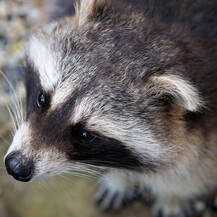 The U.S. Fish and Wildlife Service has written an insightful article about the harm done when we feed local wildlife (whether on purpose or by accident). Click here to read the article and to learn more about how to safely interact with local critters. Credit: U.S. Fish & Wildlife Service You can still plant bulbs for Spring bloom! 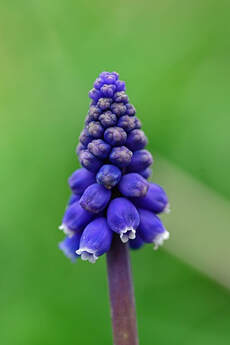 The ideal time to plant spring-flowering bulbs in our area is Fall, but if you've missed the fall planting window, you can still plant spring-flowering bulbs in late winter or early spring when the ground is workable and not frozen solid. Note that planting Spring flowering bulbs this late may result in delayed or erratic blooming, as the bulbs may not have enough time to establish roots before the growing season begins. It's still worth a try however! Additionally, some bulbs require a period of cold stratification (exposure to cold temperatures) in order to bloom, so planting them too late may not provide sufficient chilling hours (i.e. tulips, daffodils, crocus, and hyacinths). Some bulbs you might try are: Allium Agapanthus Anemone Iris Crocosmia If you've missed the optimal Fall planting window for spring-flowering bulbs, you can still plant them late and hope for some blooms, but it's best to plan ahead and plant them during the recommended Fall planting window for the best results. Here's an informative article on how to plant bulbs in Spring and still get flowers. Growing seedlings Frequently Asked QuestionsWhat causes leggy seedlings? Leggy seedlings are often caused by a combination of factors related to insufficient light and poor growing conditions. Here are some common reasons for leggy seedlings:
To prevent leggy seedlings, provide adequate light, space seedlings apart, maintain moderate temperatures, water only as needed, provide proper nutrients, and ensure seeds are planted at the correct depth. You can also try a grow light or move your seedlings to an area with improved natural light. Why do seedlings suddenly wilt even with plenty of water? Seedlings can suddenly wilt due to various factors - some common reasons include:
To address sudden wilting in seedlings, you'll need to identify and address the underlying cause. This may involve adjusting watering practices, providing better ventilation and temperature control, ensuring proper drainage, addressing pest or disease issues, and providing adequate nutrients. Make sure you use fresh seed-starting mix that has been sterilized to kill any fungi or bacteria. To determine whether your seedlings are too dry or too wet we recommend you try a moisture meter. These nifty tools are inexpensive and every plant grower should own one! Purchase inexpensive plant moisture meters at any garden center or online. Some come as two-packs. Noted Colorado naturalist and author Mary Taylor Young will share her latest book, Bluebird Seasons: Witnessing Climate Change in My Piece of the Wild. 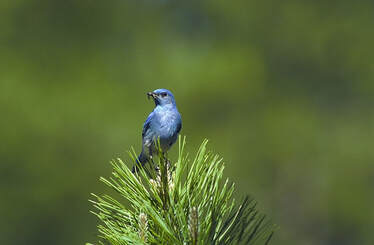 At our January Black Forest Garden Club event (all about bluebirds) we gave a shout out to Mary Taylor Young, author of the book Bluebird Seasons. The book tells the story of the growing effects of climate change on the author's land in the foothills of southern Colorado. “This wonderful book is faithful both in its witness to the world’s beauty and to our need to act now to preserve something of that wonder and grace. It brings the bracing air of the Rockies to us all.” -- Bill McKibben, author of The End of Nature This is a presentation you'll want to catch! Date: February 22, 2024 Time: 7 - 8pm Register here. Presented by Wild Connections. Our January bluebirds event summary with handouts is available here. Oranges and lemons and limes, oh my! Isn't it wonderful how citrus brightens dreary winter days for those of us in cold, wintry climates?
Here are a variety of recipes containing citrus, including beverages, preserves, soups, salads, mains courses, and baked treats to help you forget the swirling snow and chilly temps. Credit: Nourish + Nestle Silver leaves contrast beautifully with colorful flowers and add a needed brightness to tour light-saturated high-altitude gardens Better Homes & Gardens has published this wonderful article recommending 23 plants with silver foliage "because plants with silvery foliage... tone down bold reds, yellows, and oranges while harmonizing with soft blues, pinks, and whites."
Most of the recommendations in the article will grow well in our area (look for Zone 5 or less in the descriptions for each; if you see a zone higher than 5, the plant will be an annual and not a perennial where we live). Credit: BHG Red is a vibrant and attention-grabbing color that can energize garden spaces and create visual interest. The "pop of red" trend in fashion and interior design is getting a lot of attention at the moment. What is 'unexpected red theory' you ask? Basically, it is adding red, a lot or a little, to anything to make it pop and automatically look brighter and better. In gardening this translates to the intentional use of red-colored plants, flowers, or garden accessories to create focal points, add contrast, or evoke specific moods in garden design. Here are some ways you can incorporate a pop of red into your garden:
The "pop of red" trend allows gardeners to experiment with color schemes, textures, and focal points to create visually stunning and dynamic outdoor spaces. It's a versatile trend that can be adapted to various garden styles, from formal to cottage gardens, and can suit both small and large garden spaces. This Valentines, give a gift to your favorite gardeners that will last more than a couple weeks. Here are our ideas!
When in doubt, gift certificates from one of our local garden nurseries make a perfect Valentine gift for any gardener. Other gift card ideas from Victory Seeds, Gardener's Supply, Johnny’s Selected Seeds, or Burpee Seeds - where your favorite gardener can get anything from hard-to-find heirloom seeds to useful garden tools to apparel to kitchen supplies. Lots on the calendar for Colorado gardeners! February 17 from 3-5pm: Black Forest Garden Club Wine, Cheese, and Chocolate Event with tastings from local makers. PLUS seed starting using soil blocks presentation/demonstration. See home page for all details. February
March
April - SAVE THE DATE! April 13 from 10:30a to 12:30pm: Black Forest Garden Club is excited to bring you an EXCLUSIVE Behind The Scenes Tour of Tagawa Gardens! A light freeze in Spring can kill tender seedlings that were planted outside too early. Understanding last average frost date is helpful in successfully planting and transplanting seedlings. 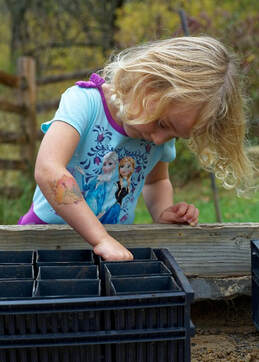 In Colorado, the timing for starting seeds indoors depends on the specific plant you're growing and your location, as our climate varies significantly from area to area. You don't want to start seeds too early, and then have them get leggy or moldy because it is too soon to transplant them into the ground outside. As a general guideline, we use "last average frost date" as a reference point for when to start seeds indoors. (Last and first frost dates are only 30% probability, according to Farmer's Almanac). The last frost date in Parker is mid- to late-May according to Almanac. But Plantmaps.com says it is June 1. Many in our area live at altitudes higher than Parker (5900 feet), so we have to take into consideration that our frost dates will be a bit later than in-town Parker, which is what Almanac uses. That said, late May is a safe date to go with. Seed packets provide guidance on when to start seeds indoors based on the number of weeks before the last frost date. Always follow the seed packet guidelines! Now that we've determined last average frost date, we can count backward from that date to determine when to start seeds indoors.
For example, if the last frost date is around late-May and a particular plant needs six weeks to mature indoors before being transplanted outdoors, you would start the seeds indoors around mid-April. It's essential to consider the specific requirements of the plants you're growing, as some may need more or less time indoors before being transplanted outdoors. Factors such as the microclimate of your garden and local weather conditions (wind anyone?) can influence the timing of planting. Potting mix and potting soil are terms often used interchangeably, but there are some differences between the two. Potted plants, whether indoors or outdoors containers, need a good potting soil to thrive. As we approach the growing season you'll want to know the difference so you can choose the best medium for your seedlings and outdoor containers. Remember to look for the word "soil" on the bag - if it's on the bag it is potting soil, not potting mix. Composition Potting mix: Typically consists of a blend of organic materials such as peat moss, composted bark, coconut coir, perlite, and vermiculite. It may also contain added nutrients and fertilizers but does not contain any dirt or earth. As such, a bag of potting mix is a lot lighter than potting soil. Note that peat moss harvesting is not good for the environment (read our article about peat here), so look for potting mixes that don't contain peat. Potting soil: Often contains a higher proportion of natural soil or topsoil along with organic matter like compost, peat moss, or aged manure. It may also contain sand or perlite for drainage. Potting soil is not sterile like potting mix. Drainage and Aeration Potting mix: Generally lighter and fluffier, providing better drainage and aeration for plant roots. Potting soil: Can be heavier due to the presence of soil, which may lead to less efficient drainage and aeration. Nutrient Content Potting mix: Often formulated with specific nutrient blends or slow-release fertilizers to provide essential nutrients for plant growth. Potting soil: May contain fewer added nutrients and rely more on natural components like compost or aged manure for nutrition. Uses Potting mix: Ideal for container gardening, indoor plants, seed starting, and plants that require well-draining soil. Potting soil: Suitable for outdoor gardening, planting in-ground, and situations where soil improvement or amendment is desired. While both potting mix and potting soil serve as growing mediums for plants in containers, the choice between the two depends on factors such as the type of plants being grown, drainage requirements, and the specific needs of the gardening project. Dive into the world of edible landscaping, where your outdoor area becomes a vibrant canvas of delicious plants. Edible landscaping is a concept where ornamental plants are replaced with edible plants, creating a landscape that is not only beautiful but also provides food. It merges the practicality of gardening with the aesthetics of landscaping, offering both visual appeal and productivity. Imagine your garden as not just a feast for the eyes but a source of culinary ingredients right at your fingertips. Black Forest Garden Club shares tips for getting started. Dual Purpose Plantings While the primary purpose of edible landscaping is to grow food, attention is also given to the aesthetic qualities of the plants chosen. This may involve selecting edible plants with attractive foliage, flowers, or fruits, as well as incorporating design elements such as paths, borders, and focal points. Get ready to harvest fresh ingredients right from your backyard. Plants in your garden can be both a feast for the eyes and a treat for the palate. Embracing Variety of color and texture
Mix various colors, textures, and forms. Edible landscaping promotes biodiversity by incorporating a wide variety of plants, which can attract beneficial insects, birds, and other wildlife to the garden. Companion planting techniques are often used to enhance plant health and yield. Strategic Plant Grouping Group plants in your garden according to their sun and water needs for optimal growth and easier maintenance. Understand each plant's individual requirements helps every plant to grow well. Edible landscaping offers a holistic approach to gardening that combines the practical aspects of food production with the beauty and functionality of traditional landscaping. By integrating edible plants into outdoor spaces, you can create sustainable, productive landscapes that nourish both body and soul. RESOURCE: Edible Landscape Recording from CSU Extension The Colorado Bluebird Project Garden Club event in January was a hit! In case you missed it, here's a summary of the presentation and the questions and answers from this information-packed event. 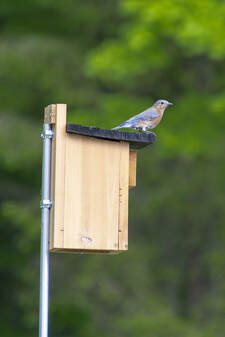 Many of BFGC's members showed a keen interest in The Colorado Bluebird Project and had great questions for our January event's presenters, Elizabeth Taylor and Curt Frankenfeld. Elizabeth is Coordinator of the Bluebird Project for Douglas County Open Space/Douglas Land Conservancy, and Curt is President of Denver Audubon's Board of Directors. The presentation covered a lot of ground, and these helpful and educational documents were handed out to those in attendance: Getting Started Factsheet Monitoring Factsheet FAQs Factsheet Bluebird Nest Box Design and Cut Details Here's a pdf with even more detailed questions and answers including:
To read: Bluebird Seasons, by nature writer and zoologist Mary Taylor, tells the story of the growing effects of climate change on her land in the foothills of southern Colorado. “This wonderful book is faithful both in its witness to the world’s beauty and to our need to act now to preserve something of that wonder and grace. It brings the bracing air of the Rockies to us all.” -- Bill McKibben, author of The End of Nature Many thanks to Elizabeth Taylor and Curt Frankenfeld for their generous time and resources in presenting at our January event. Thanks also go to Julie Luna, Garden Club Treasurer, for the excellent summary write up on the event. Soil blocking is a gardening technique that uses a blocking tool to create blocks (or cubes) of soil for seed starting and eliminates the need for unnecessary plastics. Soil blockers are a kind of metal tool that shapes a growing medium into blocks into which you plant your seeds, allowing the roots of your seedlings to have more oxygen than if they were in a plastic cell. The roots of soil blocked plants stay nice and contained within their block. Soil blockers last for decades if not generations, and your potting mix/growing medium is both the container and the soil (a block of soil if you will). Advantages of soil blocking Reduces Root Disturbance: Since each seedling grows in its own soil block, there's minimal root disturbance during transplantation. This can lead to healthier plants with less transplant shock. Environmentally Friendly: Soil blocking eliminates the need for plastic trays and pots, reducing plastic waste in gardening. Improved Air Pruning: Air pruning occurs when plant roots grow to the edge of the soil block and are exposed to air. This encourages the development of a more robust root system. BFGC's February meeting on February 17th is wine, cheese and chocolate tastings from local makers AND we will have a comprehensive presentation on soil blocking with show and tell from gardeners who are well-versed in using this seed starting method. See home page for all details. Key aspects of soil blocking Soil Blockers: These are devices designed to compress and shape soil into blocks. They come in various sizes, producing different block dimensions. Common types include hand-held soil blockers and larger, multi-block versions. They come in different sizes, but the 2-inch block is good for most seeds. Here's a video reviewing the sizes of soil blockers. Dibbles or Dibble Boards: Used to create indentations in the soil blocks for placing seeds. See our recent article on dibbles/dibblers/dibblets here. Some soil blockers come with insert dibblers you can put in and out of your blockers. See video mentioned above for examples. Dibble boards make lots of impressions all at once. See examples here and here. Or DIY your own following this video. Soil Mix Soil blocking uses a well-draining and fine-textured seed-starting mix. The mix is often customized with ingredients like moss, vermiculite, perlite, and compost. You won't use store bought potting soil for this. Blossom and Branch Farm (Longmont, Colorado) share their soil mixture here. You can also purchase specialized soil block soil mix online (search "soil block soil mixture to see the options). Seed Starting Process Wetting the Mix: Before using the soil blocker, it's essential to moisten the soil mix to the right consistency. The mix should be damp enough to hold together but not overly wet. Creating Soil Blocks: The soil blocker is pressed into the prepared mix, forming individual blocks. Seeds are then placed in the depressions using a dibble or similar tool. Germination: The seedlings are allowed to germinate and grow in their individual blocks until they are ready for transplantation. Transplantation Transplanting Intact Blocks: When seedlings are ready to be transplanted, the entire soil block is transferred directly into the garden or a larger container. This minimizes root disturbance and promotes faster establishment. Crops Suited for Soil Blocking Soil blocking is commonly used for starting a variety of vegetable and flower seeds. It is particularly effective for crops that are sensitive to transplant shock. Challenges Initial Investment: Soil blocking equipment may require an initial investment, but it can be cost-effective in the long run due to the elimination of disposable plastic trays and pots. Learning Curve: Beginners might find it takes a bit of practice to get the soil mix consistency and block formation just right. Come to our February meeting to see a demonstration on how to make soil blocks and have the opportunity to try it out for yourself with seasoned soil blockers on hand to help guide you. Soil blocking can be an excellent choice for gardeners looking for a sustainable and effective method for starting seeds indoors. It offers benefits for plant health and reduces the environmental impact associated with traditional seed starting methods. |
AuthorsBlog posts are written by Kathy Sullivan, Communications Director. Contact BFGC: [email protected] Archives
July 2024
Categories
All
|